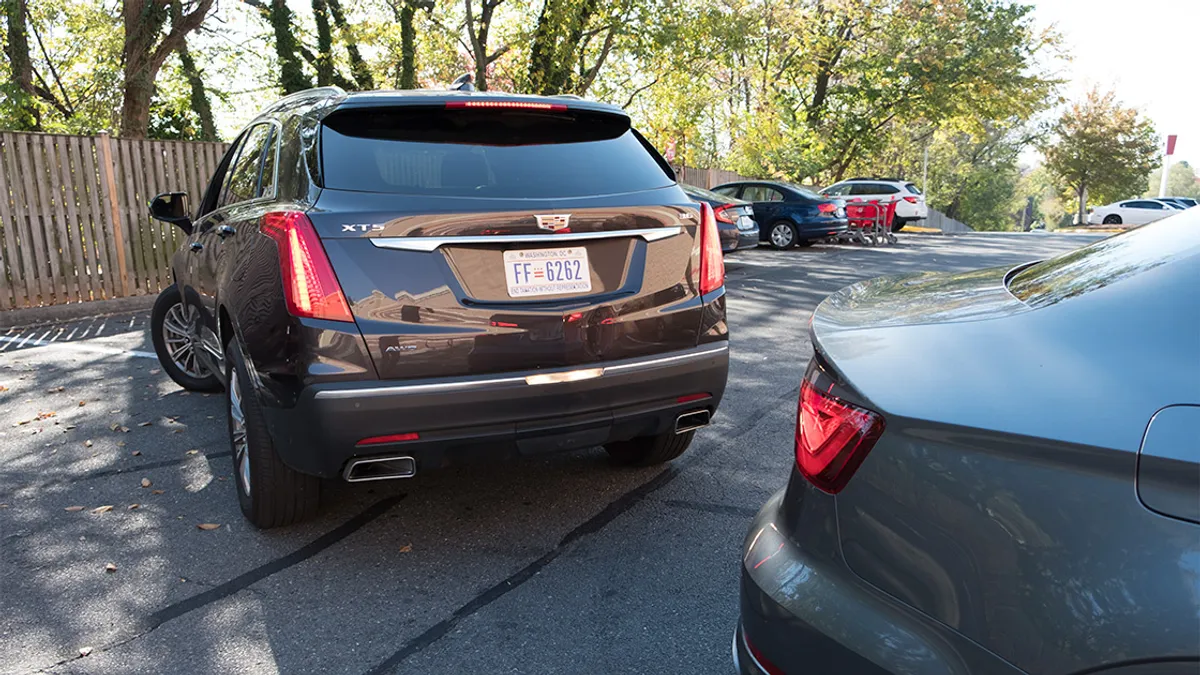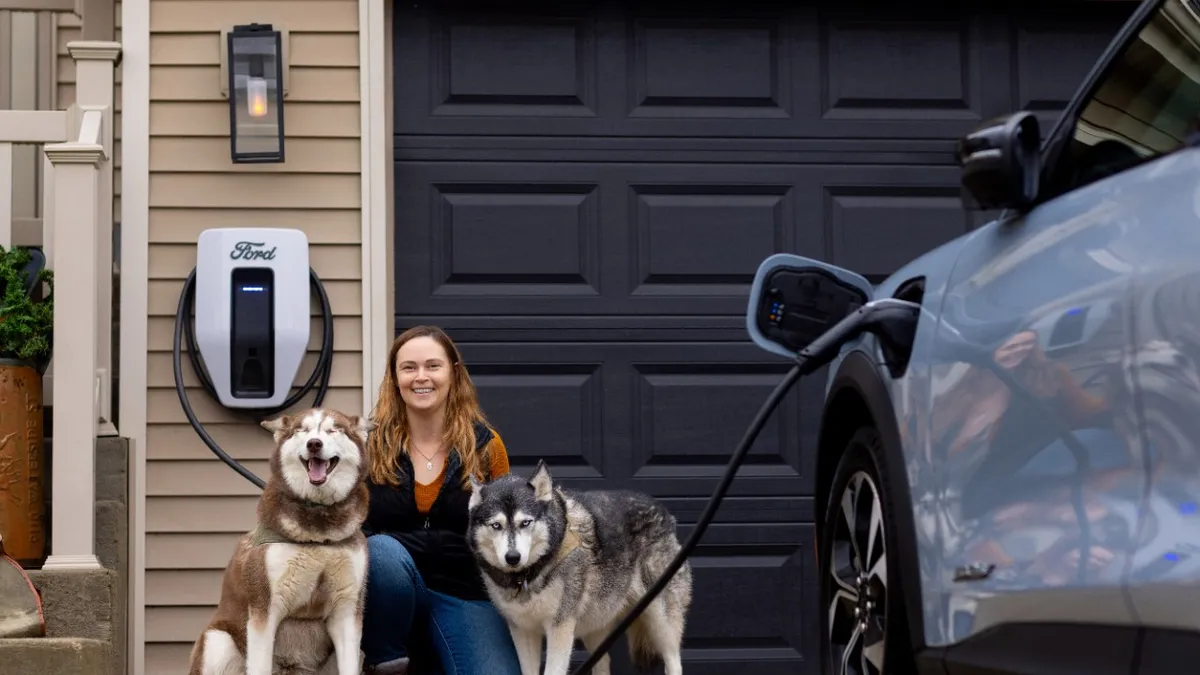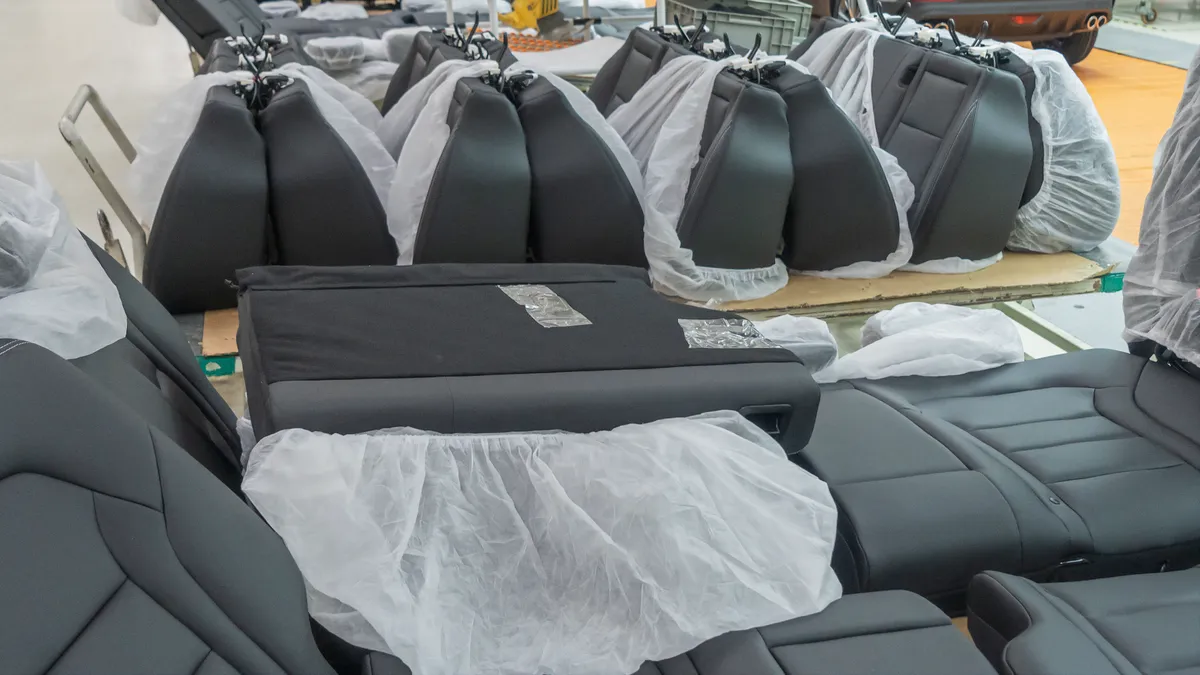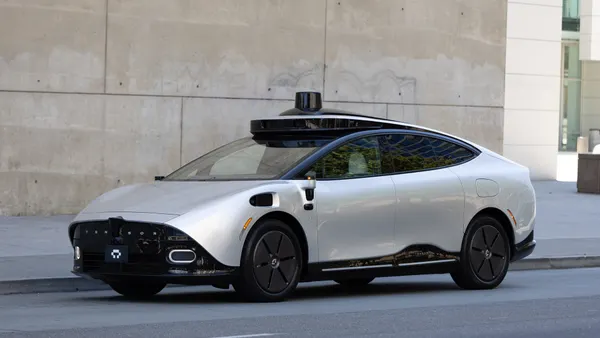Dive Brief:
- Seven out of eight compact SUV models equipped with rear automatic emergency braking systems performed well in collision avoidance tests when backing up, according to a new study by the Insurance Institute for Highway Safety.
- The IIHS rating scale for the SUVs tested included basic, advanced and “superior.” The Ford Escape, Honda CR-V, Mitsubishi Outlander and Subaru Forester each earned the highest rating of superior from the IIHS, while the Mazda CX-5, Toyota RAV4 and Volkswagen Taos were rated as advanced in preventing rear collisions. The Hyundai Tucson received only a basic rating in the tests.
- Although backup cameras have been mandated since 2018, low-speed crashes while in reverse still account for a large portion of vehicle insurance claims. But OEMs can help drivers avoid rear end collisions by pairing ultrasonics parking sensors with a rear AEB system, according to the IIHS.
Dive Insight:
Many new vehicles come packed with safety tech, including automatic emergency braking systems to help avoid forward collisions. But most vehicles don’t come standard with automatic emergency braking systems for backing up, which can help reduce insurance claims by preventing or reducing the severity of minor rear-end collisions, according to the IIHS.
“Rear automatic emergency braking systems aren’t required, making the feature far less common,” said IIHS President David Harkey, in the press release. “That’s too bad because our research consistently shows that technology that intervenes on behalf of the driver is more effective in preventing crashes than other types of solutions.”
While most low-speed crashes do not typically result in serious injuries, they can still rack up thousands of dollars in vehicle damage. Around 30% of all insurance claims in 2022 were for rear collisions, which typically averaged over $4,000 to repair, according to the IIHS.
The IIHS-affiliated Highway Loss Data Institute also found that rear AEB systems are highly effective and can reduce the frequency of damage claims to other vehicles by 29%, which also reduced insurance claims of policy holders by 9%.
For more advanced vehicle safety systems using a combination of rear AEB, backup cameras and parking sensors, the IIHS study found that police-reported rear end collisions were reduced by 78%. Meanwhile, rear cross-traffic alert systems alone reduced collisions by 22%.
“Rear AEB probably offers the biggest bang for the buck of any of the crash avoidance systems we monitor,” said HLDI Senior Vice President Matt Moore, in the press release. Rear AEB costs as little as $600 as an optional on some vehicles, according to the HLDI.
Backing up near a pole or other vehicles can be tricky for drivers, especially when turning at the same time, according to David Aylor, vice president of active safety at IIHS.
The tests for the SUVs included 24 trial runs conducted at 4 miles per hour, with some traffic scenarios weighted more heavily than others. The vehicles’ AEB systems were assigned points based on the number of runs that either avoided a collision, or reduced speeds to less than 1 mile per hour before impact.
The Ford Escape avoided collisions consistently in all four of the test scenarios. The only exception was when another vehicle was positioned at a 10-degree angle to the vehicle’s backward path. The Subaru Forester also avoided collisions in all scenarios except the one in which the test vehicle reverses toward a passenger car target positioned at a 45-degree angle.
Backup tests using a pedestrian dummy were not included because the ultrasonic sensors used in most current vehicle rear AEB systems are not designed to detect people, the IIHS says.
Rear AEB systems were standard on just 23% of model year 2023 passenger vehicles in the U.S. and only available as an option on another 32%, according to the report. An HLDI analysis shows that at this rate of adoption, most vehicles in the U.S. won’t come with these systems until almost 2050.














